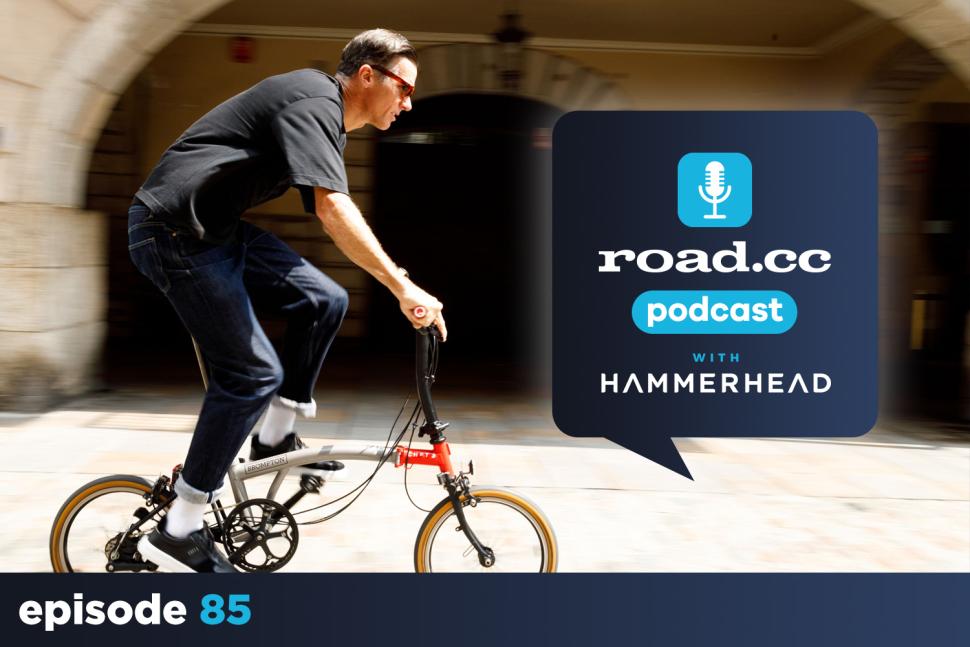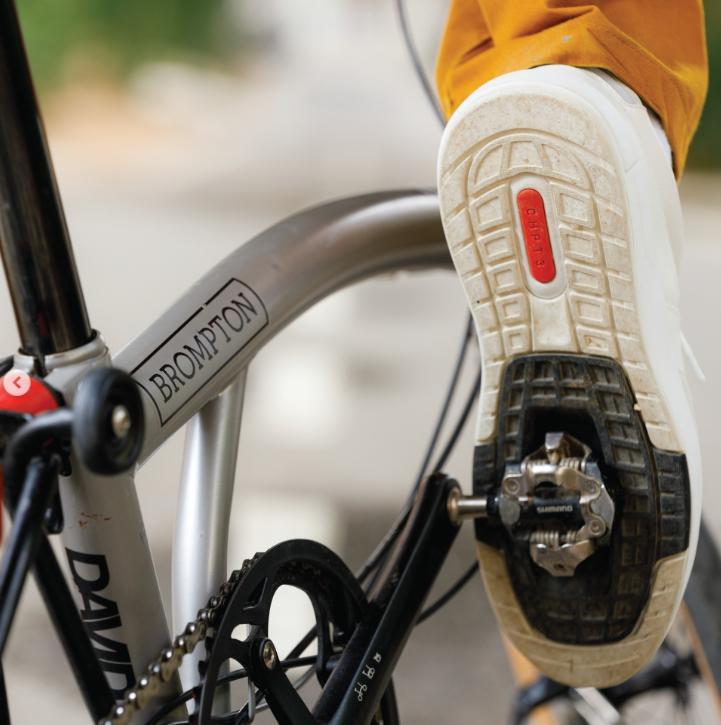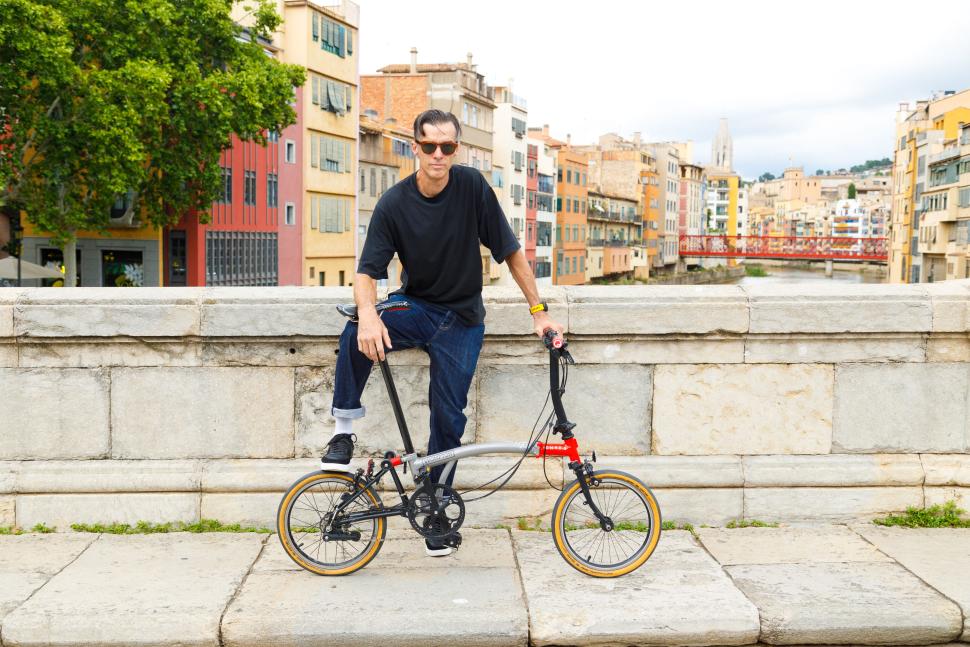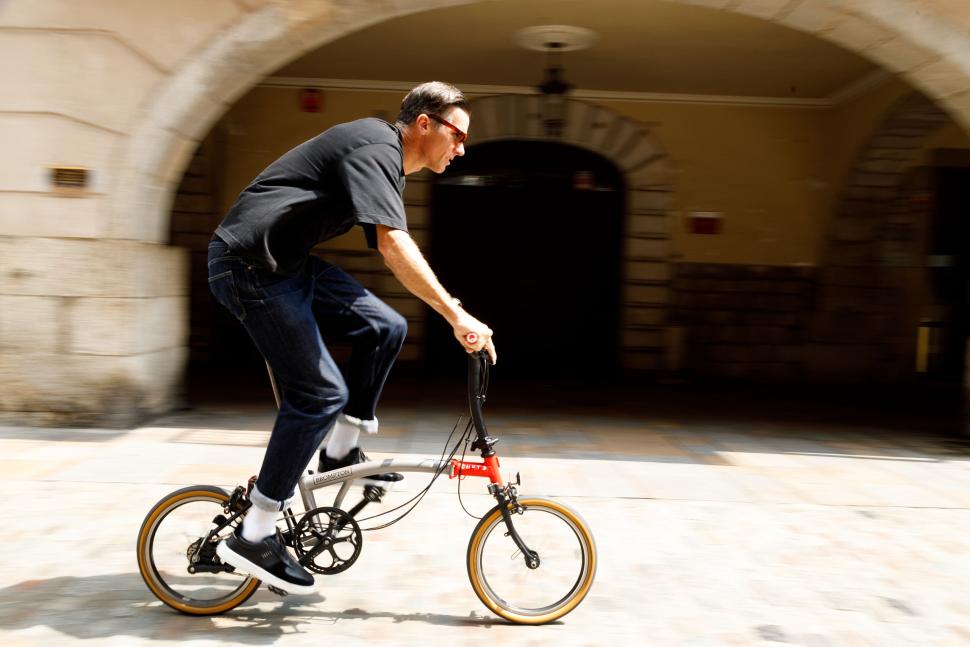- News
- Reviews
- Bikes
- Accessories
- Accessories - misc
- Computer mounts
- Bags
- Bar ends
- Bike bags & cases
- Bottle cages
- Bottles
- Cameras
- Car racks
- Child seats
- Computers
- Glasses
- GPS units
- Helmets
- Lights - front
- Lights - rear
- Lights - sets
- Locks
- Mirrors
- Mudguards
- Racks
- Pumps & CO2 inflators
- Puncture kits
- Reflectives
- Smart watches
- Stands and racks
- Trailers
- Clothing
- Components
- Bar tape & grips
- Bottom brackets
- Brake & gear cables
- Brake & STI levers
- Brake pads & spares
- Brakes
- Cassettes & freewheels
- Chains
- Chainsets & chainrings
- Derailleurs - front
- Derailleurs - rear
- Forks
- Gear levers & shifters
- Groupsets
- Handlebars & extensions
- Headsets
- Hubs
- Inner tubes
- Pedals
- Quick releases & skewers
- Saddles
- Seatposts
- Stems
- Wheels
- Tyres
- Health, fitness and nutrition
- Tools and workshop
- Miscellaneous
- Buyers Guides
- Features
- Forum
- Recommends
- Podcast
news
 road.cc Podcast Episode 85
road.cc Podcast Episode 85“I’ve rediscovered my love of cycling”: David Millar and James Carnes of CHPT3 on appealing to every cyclist and designing a commuter shoe you can wear with a suit… and down a Swiss mountain
If you’re a fan of nerdy technical chat about shoe design and the joy of riding a bike through town in a suit with a multiple grand tour stage winner, then you’re in for a treat on this special bonus episode of the road.cc Podcast.
Because, to mark the launch this week of the CHPT3’s Transit 2.0, we sat down with the brains behind the urban commuter shoe that aims to combine the “power of a pro cycling shoe and the comfort of a luxury sneaker” – pro cyclist-turned-commentator David Millar and ex-Adidas designer James Carnes – to discuss the inspiration behind the potentially revolutionary new cycling footwear, Millar’s rediscovered love for cycling, and whether you can wear the same shoe at the local nightclub, in a meeting at the office, and down a precipitous Swiss mountain.
Listen to the road.cc Podcast on Apple Podcasts
Listen to the road.cc Podcast on Spotify
Listen to the road.cc Podcast on Amazon Music
Finding a shoe you can cycle to work in and not click-clack around the office like Michael Flatley when you get there, or be forced to lug your civvie shoes around with you in a bag all day long, has long proven a headscratcher for commuter cyclists.
While many have tried and failed over the years to build the ultimate SPD-compatible commuter trainer – often veering towards being unwalkable off the bike or ditching the concept of clipping in altogether – the CHPT3 Transit 2.0, and its cleat-covering ‘microplate’, claims to be the “first of its kind engineered for riding in the city”… and walking comfortably around when you get there.
The shoe’s multipurpose approach stems from a broader desire to bust out of the niches the cycling industry often finds itself in, says CHPT3’s David Millar and James Carnes.
Millar, of course, was for most of his life firmly rooted in the pro cycling world, a stage winner at all three grand tours, including four at the Tour de France and five at the Vuelta a Espana, a confessed doper-turned-staunch anti-doping advocate, ITV4 commentator, and founder of cycling clothing band CHPT3, its vowel-less moniker derived from Millar’s view of retirement as the third chapter of a career previously divided into his pre and post-doping ban eras.
Carnes, meanwhile, is a self-confessed outsider to the often-closed world of cycling. A former global creative director and Head of Brand Strategy at Adidas, he used his decades worth of design experience in the world of sports to rethink the often confused, muddled world of urban cycling shoes, all the while helping a stodgy old former pro like Millar redefine what it means to be a cyclist and break out of his racing-focused bubble.
“What’s been really interesting over the past few years has been my rediscovery of my love of cycling,” Millar tells the road.cc Podcast, from an extremely Swiss-looking chalet nestled in the Alps in the middle of a family downhill mountain biking holiday – where he was testing out the new shoes in perhaps the most extreme environment possible.
“And that’s given a whole new impetus to what we want to do, which is to start to change people’s perception of all types of cycling.
“I found, and James in particular has helped me see this as he comes from outside cycling, that I was becoming blinkered from within the cycling world. It’s very easy to find yourself locked in and only think about people who are in your ‘area’.
“Whether it’s road cycling, mountain biking, or urban commuter cycling, it’s a really strange world, cycling, where every niche has its moat around it, and everyone stays very firmly within their island. And with CHPT3, we really wanted to start to bleed out of that and transfer across, not only those different ideas within cycling, but to start thinking of things outside it that we can bring in.”
James agrees: “Unlike running or football, or even yoga, cycling hadn’t really broken the barrier, through making a sport its own that’s very closed off to something everyone wants to be part of. But I kind of feel like cycling is doing that now.
“It’s exciting. Of course you get people saying it’s sacrilegious and you’re totally ruining cycling, but cycling is such an amazing thing… And for me, it’s all in. I could be riding a road bike, a Brompton, a mountain bike, or riding to work,” the American says.
“The joy of riding is something a lot of people are discovering, but there’s still not a proliferation of things you can own and wear that are really rooted in your entire daily life.”
So how did the idea for the Transit come about? And what problems did they encounter on the way while trying to design the ultimate urban commuter shoe?
A Brompton enthusiast who used the folding bike to propel himself around the Tour de France’s finish areas and to and from his hotel during his Julys in the commentary box, Millar soon became disgruntled with the downsides of cycling to work, especially when it came to his feet.
After coming to his “wit’s end” with the current urban commuter shoes on the market – including one particular popular urban shoe that gave him blisters just walking about at the Tour – Millar sent every pair of cycling shoes he owned to James, who promptly took them all apart to see what worked and what, frankly, didn’t.
“And James was looking at them and all and was like, ‘oh my God, this is so basic, what they’re doing’. And I was like ‘f*** yeah, it feels it’,” Millar says.
“I started taking all these shoes apart, with this brief – this summertime, Tour de France Brompton riding was a perfect microcosm of a brief for the bigger picture,” James adds.
“He was saying, I’m on the bike 20 per cent of the time, walking around 80 per cent of the time, I’m going up hills, I need power and to be able to go fast, but I also want to hop off my bike when I want to and I don’t want to change my shoes. Oh, and by the way, at the end of the day I might go to a press conference, where everyone is dressed up.
“And I was like, okay, no sweat, this doesn’t sound too hard!”
Faced with Millar’s extremely wide-ranging brief, Carnes noticed the same problem popping up, that cycling shoes – even ones supposedly built for urban commuting – were still too rooted in the cycling world of performance, leading him to completely reevaluate the build, design, and style of the shoe that ultimately, three years later, became the Transit 2.0.
Which leads us to the most important questions: Do they look cool? Are they suitable for cycling and walking about the office and town? How do they fare on a downhill mountain biking route in the Swiss Alps, or in the most inhospitable of British town centres? And most importantly, can you wear them with a suit?
“For me personally, the journey of watching James design and develop has been so eye opening,” Millar says. “And it’s genuinely the sneaker I could wear with a suit, or in jeans, or even downhill mountain biking – which is nuts, because that’s the dream shoe.”
The road.cc Podcast is available on Apple Podcasts, Spotify, and Amazon Music, and if you have an Alexa you can just tell it to play the road.cc Podcast. It’s also embedded further up the page, so you can just press play.
After obtaining a PhD, lecturing, and hosting a history podcast at Queen’s University Belfast, Ryan joined road.cc in December 2021 and since then has kept the site’s readers and listeners informed and enthralled (well at least occasionally) on news, the live blog, and the road.cc Podcast. After boarding a wrong bus at the world championships and ruining a good pair of jeans at the cyclocross, he now serves as road.cc’s senior news writer. Before his foray into cycling journalism, he wallowed in the equally pitiless world of academia, where he wrote a book about Victorian politics and droned on about cycling and bikes to classes of bored students (while taking every chance he could get to talk about cycling in print or on the radio). He can be found riding his bike very slowly around the narrow, scenic country lanes of Co. Down.
Latest Comments
- Barraob1 4 hours 4 min ago
It was cheaper and better when the IVCA ran it. Elite events don't give a shit about riders
- David9694 4 hours 10 min ago
Elderly man sentenced following serious crash in Ringwood...
- Slartibartfast 6 hours 6 min ago
What I find most amazing is that they didn't use this an opportunity to encourage drivers to check their vision and get an eye test. I was waiting...
- slc 6 hours 48 min ago
The Cugel I knew typically prevailed on others to prepare food. But I was always curious about the porridge of drist and raisins enjoyed on the...
- kingleo 7 hours 46 min ago
Cyclists have been riding in Bister for about 150 years, and now all of a sudden they are a great danger to pedestrians.
- the little onion 8 hours 13 min ago
I didn't remove the sound because I didn't think that it mattered - quite clearly the swearing was in reaction to an act of frankly horrid...
- Nigel_2003 9 hours 26 sec ago
Know how the limiter screws on your derailleur work and use the right ones to keep chain on a manageable cog at the back and/or chainring at the...
- Freddy56 9 hours 23 min ago
Story one: "Here is all the deals at 50% off."...
- andystow 9 hours 37 min ago
Front wheel trued and tensioned last night. I think it took me well over an hour.





Add new comment
17 comments
If I were still bike commuting in to the office (I retired from the sh*tp*t last year), then these would be perfect for riding in then tooling around the office and going to mtgs etc. Smart enough to blag it, comfy enough for the day, practical enough to ride in
It took three years to design a fairly nondescript pair of sneakers that incorporate an SPD cleat - something that, incidentally, numerous other companies have already successfully done (see Adidas, Endura, Specialized, Pearl Izumi, Giro and many others)?
As the "rtcl" clearly states - there are other brands on the market and they all do it badly. (I've paraphrased slightly). This is a less bikey and less bike focussed shoe (as clearly stated), and as such differnt to a hooney bright orange pair of downhill MTB shoes you can walk badly in. These should walk like a shoe and ride like a cycle shoe, unlike most cycling brands which sacrifice pretty much all walking ability to ride function,
I'm so out of touch - I didn't even realise 'R' was a vowel these days.
Say "R" out loud. Do you hear a consonant?
AAAARRRRRRRRRR!!!!
Sounded like a pirate
Not in some dialects of English, eg Scottish. But it's a glide in most forms of English
You're in company - due to declining formal English teaching and phonological changes nowadays many don't know their "R"s from their "L", bro.
Funny how they don't mention the price - £195. I wonder why that is...
Well, Dave has to fund his lifestyle, I guess.
I use SPDs on my commuter bike and would like something a bit more practical when off the bike than MTB shoes but haven't tried any of this type (and to be fair to my ancient Shimano MT40s they are surprisingly good on stairs and shiny surfaces).
Tbf the Adidas velosambas are £110 rrp. So given these are a little less commonly produced, the price is probably fair.
That does of course assume that £110 is a fair price for the Adidas product which may be a moot point…
wow, what an incredibly unnecessary creation. surely there's literally zero benefit in using these.
Depends how you use your bike. For a sports cyclist there's no point. If you use your bike for transport and prefer clipless pedals then shoes you can comfortably walk in are essential. It's a niche market, but it's certainly a market.
I've got SPD pedals on my road bike and I'm often using the train, so that involves walking up and down stairs and on slippery surfaces. I get away with some Bont MTB shoes, but some more casual shoes would be useful for when I take my other bike (also SPD pedals) to go shopping.
I'm more "flat" for casual use now, but certainly when I only had one bike (after the toe-strap years...) it was SPDs for me. And for safety reasons and ergnomics my recumbent pretty much needs some foot retention - and I use that for outings rather than races so being able to walk comfortably when off it is a must!
Been wanting something like these for nigh on 25 years. Can't afford them now and no longer need them in the way I did when cycling to business meetings all over London. Age 69, I now ride flats on the urban town bike. They'd have been perfect for the steps and tunnels where I used to take off cycling shoes to walk in socks